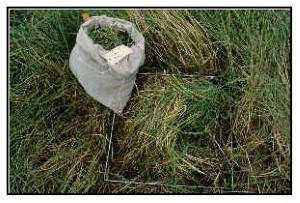Andrist-Rangel Y, Hillier S, Öborn I, Lilly A, Towers W. Edwards AC and Paterson E. 2010. Assessing potassium reserves in northern temperate grassland soils: A perspective based on quantitative mineralogical analysis and aqua-regia extractable potassium. Geoderma 158 (3–4) 303-314.
Andrist Rangel, Y. 2008. Quantifying mineral sources of potassium in agricultural soils. Doctoral diss. Dept. of Soil and Environment, SLU. Acta Universitatis agriculturae Sueciae vol. 2008:53.
Andrist-Rangel, Y., Simonsson, M., Andersson, S., Öborn, I & Hillier, S. 2006. Mineralogical budgeting of potassium in soil: A basis for understanding standard measures of reserve potassium. Journal of Plant Nutrition and Soil Science 169, 605-615.
Andrist-Rangel, Y., Edwards, A.C., Hillier, S. & Öborn, I. 2007. Longterm K dynamics in organic and conventional mixed cropping systems as related to management and soil properties. Agriculture, Ecosystems and Environment 122, 413-426.
Simonsson, M., Andersson, S., Andrist-Rangel, Y., Hillier, S., Mattsson, L. & Öborn, I. 2007. Potassium release and fixation as a function of fertilizer application rate and soil parent material. Geoderma 140, 188-198.
The articles below were also included in Ylva's PhD thesis:
Andrist Rangel, Y., Simonsson, M., Öborn, I & Hillier, S. Sources of HCl-extractable potassium in agricultural soils - insights from full pattern quantitative and differential X-ray powder diffraction. (Manuscript).
Andrist Rangel, Y., Hillier, S., Öborn, I., Lilly, A., Towers, W., Edwards, A. C. & Paterson, E. Assessing long-term potassium supply in grassland soils: A regional perspective based on quantitative mineralogy and aqua regia-extractable K. (Manuscript).
